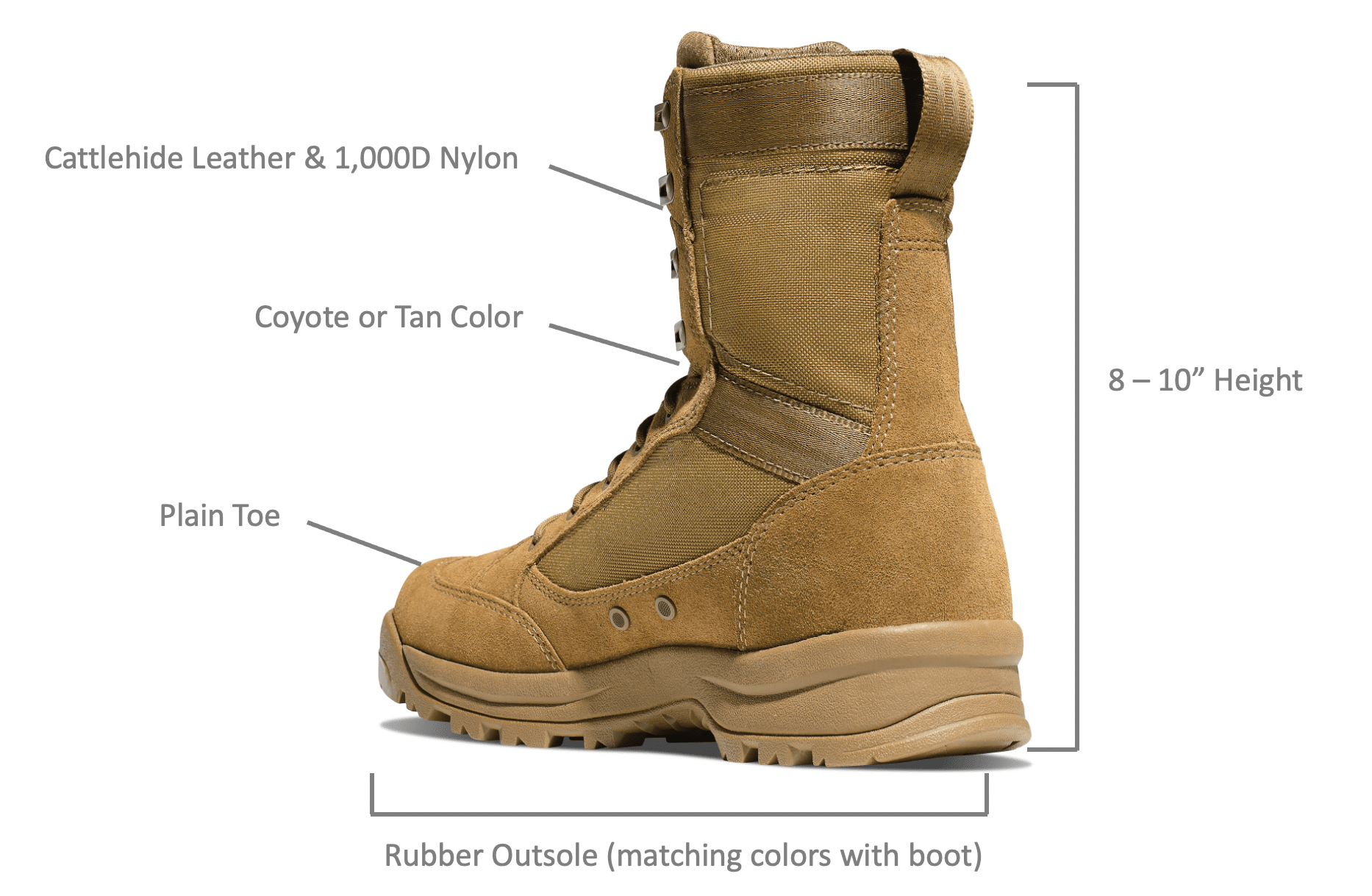Ar 670-1 Boots Regulation : What it is
Why are Boots Regulation Important?

The AR 670-1 regulation plays a crucial role in maintaining uniformity and professionalism within the United States Army. By specifying the type and appearance of boots, it ensures that all soldiers present a consistent and cohesive image to the public and maintain operational readiness.
2. Authorized Boots: Meeting the AR 670-1 StandardsTypes of Authorized Boots

AR 670-1 permits the use of several types of boots that meet the specified criteria. These include:
- 1. Combat Boots
- 2. Tactical Boots
- 3. Jungle Boots
- 4. Flight Boots
- 5. Cold Weather Boots
Height and Color

The AR 670-1 regulation specifies certain requirements for boot height and color:
- 1. Height: Tactical and Combat boots should have a height of 8 to 10 inches, while jungle boots should be 8 to 10 1/4 inches.
- 2. Color: The regulation allows for multiple colors, depending on the specific purpose of the boots. For instance, the Army Combat Boots must be coyote brown, while boots for flight crews may be black.
Proper Care and Cleaning
To maintain the appearance and functionality of your authorized boots, it is essential to follow proper care and cleaning procedures. Here are some tips:
- 1. Regularly brush your boots to remove dirt and debris.
- 2. Use a damp cloth and mild soap to spot clean any stains.
- 3. Avoid using harsh chemicals or solvents on your boots.
- 4. Allow your boots to air dry, and avoid exposing them to excessive heat or direct sunlight.
1. Can I wear boots that are not listed in the AR 670-1 regulation?
No, the regulation specifies the approved boots that align with the Army's standards. Wearing unauthorized boots may result in disciplinary action.
2. Are there any exceptions to the boot regulations?
In certain cases, commanders may grant exceptions for medical reasons or specific job-related requirements. However, such exceptions are granted on a case-by-case basis and require proper documentation.
3. Can I wear boots of different colors or designs for special occasions or events?
While the AR 670-1 regulation primarily focuses on standard uniformity, commanders may permit temporary exceptions for special events. However, these exceptions must be approved in advance and should not compromise the overall professionalism of the Army's image.
In conclusion, the AR 670-1 boots regulation is a crucial aspect of ensuring uniformity and professionalism within the United States Army. By adhering to these regulations, soldiers not only maintain a consistent appearance but also uphold the standards and values of the military. It is essential for every service member to familiarize themselves with the requirements outlined in AR 670-1 to ensure their boots are regulation-compliant. Remember, the boots you wear not only represent you as an individual but also contribute to the collective pride and image of the U.S. Army.Shoes Maelstrom Mil Lite Mens 9 Coyote Brown Military Boot AR 670-1
 Image Source : sanchia.com.sv
Image Source : sanchia.com.sv Army Uniform Policy; Clarity On Authorized Boots | RallyPoint
 Image Source : www.rallypoint.com
Image Source : www.rallypoint.com AR 670-1 Forced Entry Boots Coyote Tactical US Army Boot 8" Rothco 5361
 Image Source : www.pinterest.com
Image Source : www.pinterest.com 💣 Ar 670 1. Army Publishing Directorate. 2022-11-09
 Image Source : webapi.bu.edu
Image Source : webapi.bu.edu Ar 670 1 Boots - Change Comin
 Image Source : changecominon.blogspot.com
Image Source : changecominon.blogspot.com coyote sfb ocp compliant acg expocafeperu
Versace Army Boots Ar 670-1 - Army Military
 Image Source : armymilitary.net
Image Source : armymilitary.net 11 Best AR 670-1 Compliant Army Boots - Comforting Footwear
 Image Source : comfortingfootwear.com
Image Source : comfortingfootwear.com 5361 Rothco AR 670-1 Coyote Forced Entry Tactical Boot - Military Footwear
 Image Source : www.combathunting.com
Image Source : www.combathunting.com ar rothco coyote forced entry tactical boot footwear military
Ar rothco coyote forced entry tactical boot footwear military. 11 best ar 670-1 compliant army boots. Shoes maelstrom mil lite mens 9 coyote brown military boot ar 670-1. Ar 670-1 forced entry boots coyote tactical us army boot 8" rothco 5361. 💣 ar 670 1. army publishing directorate. 2022-11-09